If you’re like many homeowners, you’ve probably spent some time considering how you might improve your kitchen. One question that homeowners often ask when considering a remodel is, “Can I remove a wall to make my kitchen more spacious and functional?” The idea is tempting, especially when you envision a bright, open space where family and friends can gather more freely.
At Lamont Bros., we’ve guided countless homeowners through the intricate process of their Portland kitchen remodel. For several of our past clients, part of their kitchen remodel involved removing a wall. Our experience has shown that while taking out a wall is not a decision to be taken lightly, it can significantly enhance your kitchen’s layout and overall ambiance.
In this article, we’ll cover the important details you need to understand about removing a wall from your kitchen. By the end, you’ll have a comprehensive understanding of what it takes to remove a wall during a kitchen remodel and whether it’s the right move for you. Specifically, we’ll cover:
- Reasons you might choose to remove a wall during a kitchen remodel
- Important things to consider before you remove a wall
- Common challenges of removing a wall
- Should you remove a wall yourself or leave it to professionals?
Removed Wall Between Kitchen and Dining Room: Before and After
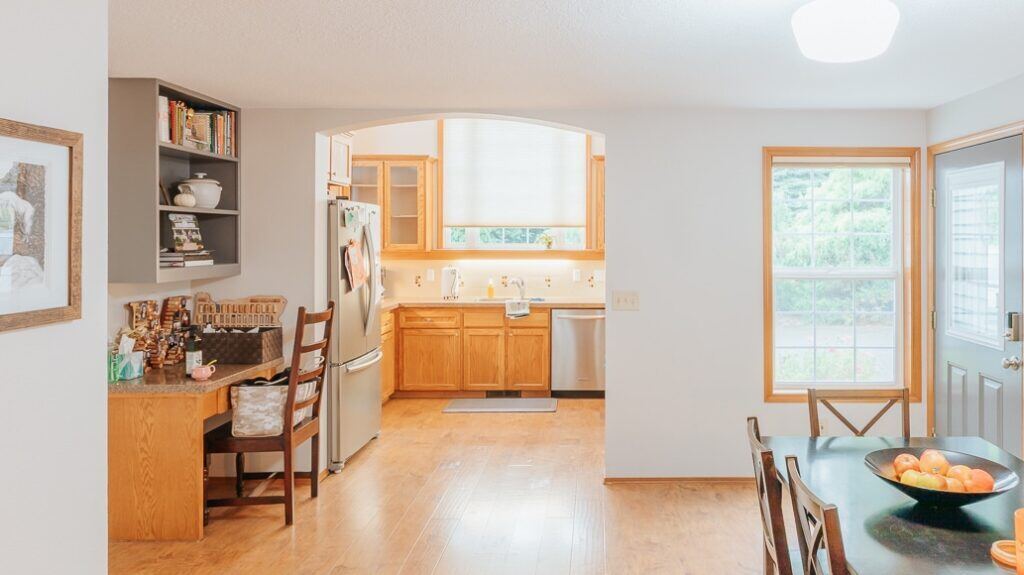
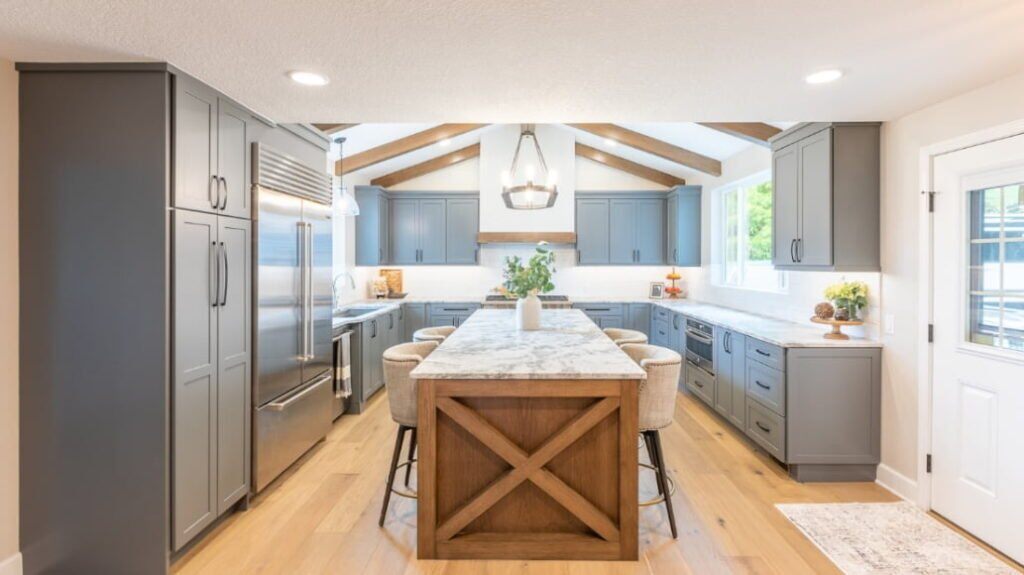
Why Remove a Wall in the Kitchen?
The idea of removing a wall during your kitchen remodel might seem like a drastic measure. However, there are several compelling reasons to consider it. Let’s discuss why this could be a beneficial move for your home.
Open Floor Plan
The most immediate benefit of removing a wall is that doing so can result in a more open floor plan. Closed-off kitchens can feel isolated from the rest of the home, making it difficult to interact with family and friends while preparing meals or hosting events.
An open layout fosters a more social environment, making it easier to interact with family and friends in adjacent rooms while you’re busy in the kitchen. It also allows for a more flexible arrangement of furniture and appliances.
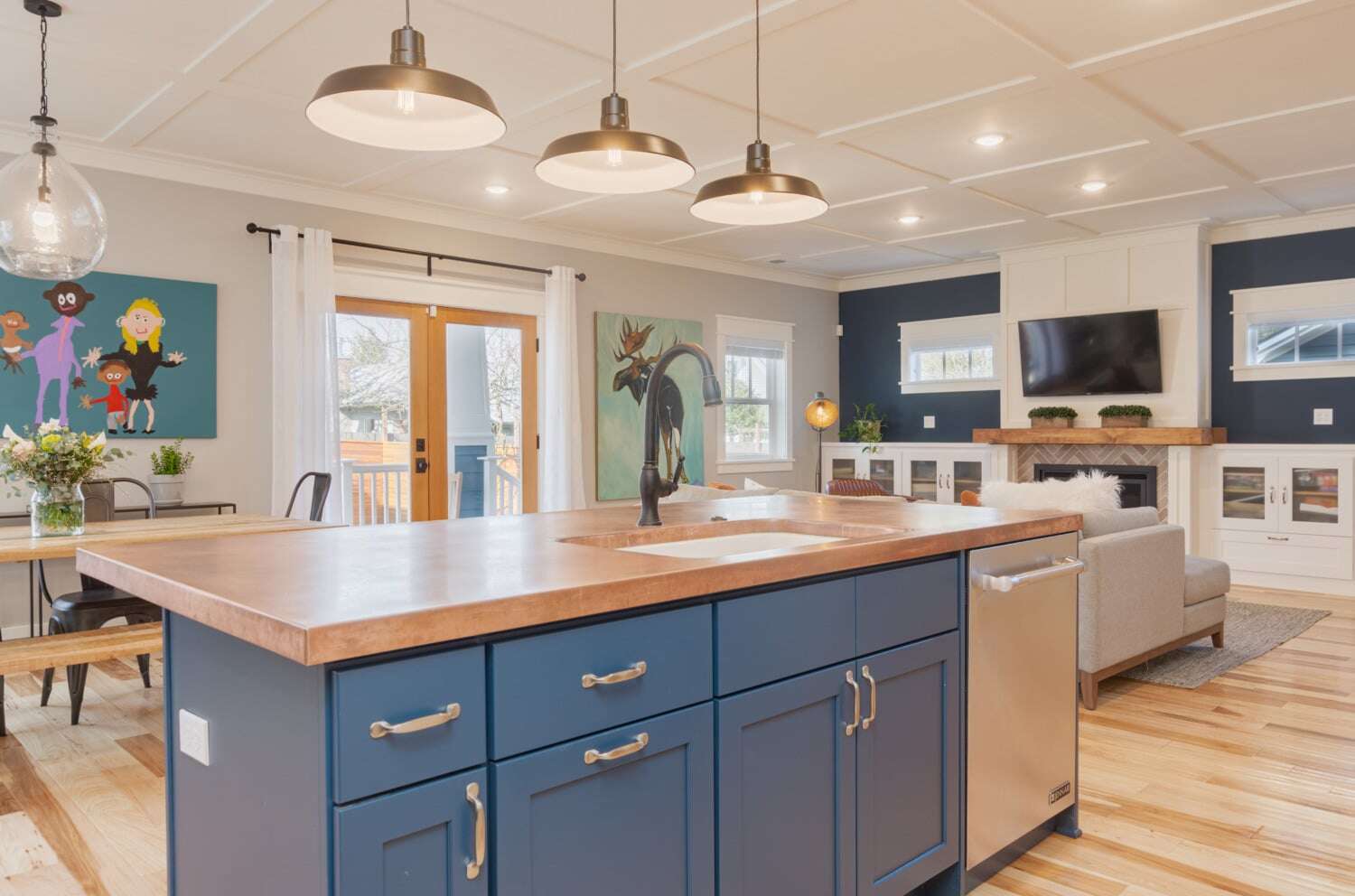
Aesthetic Appeal
Making the choice to remove a wall can dramatically change the look and feel of your kitchen remodel, as well. It can make the space appear larger and more inviting, drawing the kitchen in as an integral part of the home.
Another benefit of removing a wall is that it can improve the flow of natural light by reducing barriers within the home. This aesthetic enhancement is especially valuable here in the Pacific Northwest, where natural light is rare a precious commodity.
Enlarging the Kitchen Space
Sometimes, your kitchen needs to be bigger to accommodate your needs. This is especially true for homes built in the early 20th century when kitchens had fewer appliances and naturally required less space. They just don’t fit the needs of the modern homeowner.
Removing a wall and expanding your kitchen into other areas of the home can be an effective way to increase your kitchen’s square footage. That is, as long as other areas of the home can accommodate increasing the size of the kitchen. Doing so can provide more room for additional appliances, storage, and space to move around while you cook.

Key Considerations Before Removing a Wall
Before you grab a sledgehammer and start swinging, there are some critical factors to consider. Making an informed decision requires understanding the implications and challenges of removing a wall in your kitchen.
Is it Beneficial to the Layout?
The first question to ask is whether removing a wall will actually benefit your kitchen’s layout. Sometimes, what seems like a good idea initially may not work well with the adjacent rooms. In other cases, it may require significant restructuring of the kitchen layout.
For example, if several important appliances or cabinets sit along the wall you plan to remove, the kitchen will need a complete redesign to accommodate for the loss of that wall space. You’ll want to ensure that the new open space creates a cohesive environment that complements the rest of your home.
To learn more about basic kitchen design principles, read our article, “How to Design a Kitchen Remodel.”
Is the Wall Load-Bearing?
One of the most crucial considerations when deciding whether to remove a wall is whether that wall is load-bearing. Non-structural walls can be removed relatively easily. However, taking down a load-bearing wall is a more complex and costly process that often requires structural engineering to your home.
It’s essential to consult with remodeling experts to assess the wall’s role in supporting your home’s structure. If the wall you plan to remove turns out to be structural, it is essential that you follow the proper protocols and hire qualified professionals to ensure that your home remains safe and structurally sound.

Permits and Regulations
Depending on your location, the scope of work, and whether the wall you plan to remove is structural, you may need various permits before you can proceed with your remodel. Even if the wall is not load-bearing, it may still contain electrical and plumbing, which will require separate permits.
Navigating the permitting process can be time-consuming, so it’s best to consult with experts who are familiar with local regulations. In the Portland area, the Field Issuance Remodeling (FIR) program is a fast-track permitting process available through specific licensed contractors.
Common Challenges and Surprises When Removing a Wall
Even with the best planning, removing a wall can come with its own set of challenges and setbacks. Being prepared for these potential issues up front can help you navigate the process more smoothly in case you do encounter some problems down the road.
Unforeseen Structural & Utility Issues
One of the most common challenges homeowners face is discovering a previously unknown structural or utility issue once the wall is opened up.
For example, we performed a kitchen remodel on a historic Portland home that involved removing a wall. During the demolition, our team discovered that the wall contained a brick chimney that had been hidden for decades. This discovery required additional demolition and engineering work to ensure that the chimney could be removed without compromising the structural stability of the home.
While this serves as an extreme example of what you might discover, it’s more common to find old electrical or plumbing utilities that need to be replaced to avoid fire or flood hazards. These types of discoveries can increase the cost and timeline of a project.
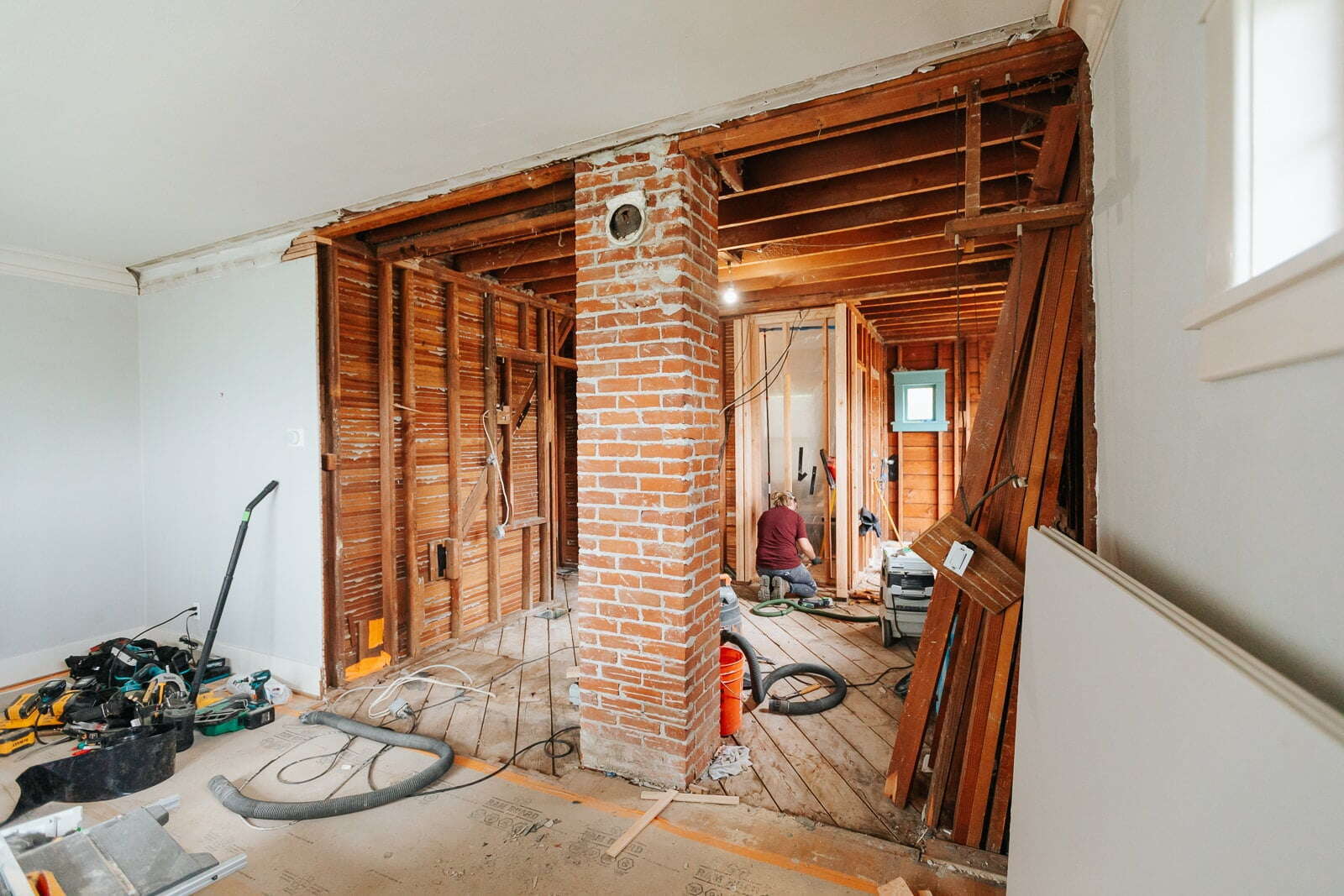
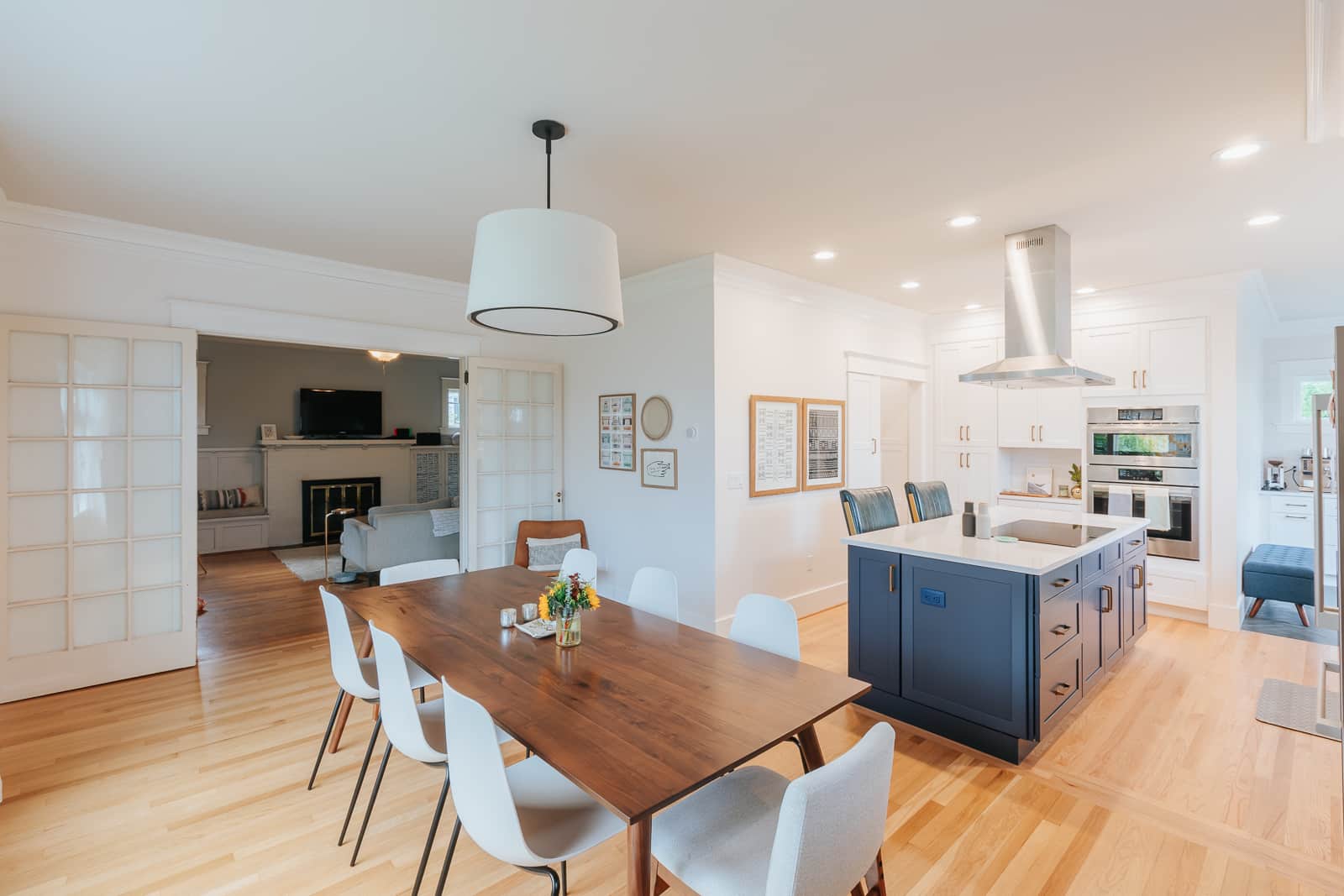
Hazardous Materials
Especially in older homes, hazardous materials like asbestos or lead can be a concern. Asbestos was commonly found in lath and plaster walls, which were common throughout the early 20th century. Lead was also used in interior paint, meaning your walls could hypothetically contain both materials at once.
Removing a wall with asbestos plaster or lead paint can be dangerous and costly. You should absolutely leave this type of project to professionals who know how to protect you and your home from further hazardous material exposure.
DIY vs. Hiring a Professional
The idea of removing a wall yourself might be tempting, especially if you’re handy with tools and enjoy a good DIY project. However, there are a few factors to consider before taking on such a significant task yourself.
Safety Precautions
If you decide to go the DIY route, it’s crucial to take proper safety precautions. This includes wearing proper protective equipment like eye protection, safety gloves, and a respirator mask. It’s also important that you set up containment protection to prevent the spread of dust and debris throughout your home.
When to Hire a Professional
While some aspects of wall removal can be done yourself, there are certain situations where hiring a professional is not just advisable but necessary.
For example, if the wall is load-bearing or contains hazardous materials, you’ll need a team of experts to ensure the job is done safely and up to code.
It’s also good practice to seek expert guidance when dealing with non-structural changes that impact the design and functionality of your home. Working with a professional designer can help you make the most of your space when you choose to remove a wall during a remodel.
Cost Implications
The cost of removing a wall can vary significantly depending on whether you do it yourself or hire a professional. Obviously, you’ll save a lot in labor costs by doing the work yourself.
While DIY might seem like a cost-saving option, this is only true if everything goes smoothly. Unexpected challenges like those listed above can quickly escalate costs and push your project into the position of requiring professional guidance.
Even without significant challenges, hiring a qualified professional ensures that the job is done correctly, though it will likely be more expensive upfront.
Is Removing a Wall in the Kitchen Part of Your Remodel?
If opening up your space and expanding your kitchen to include more cooking space, a larger island, more seating, or more room for gatherings sounds ideal, we’d love to help.
Connect with our team to get your questions answered. Our Design team can quickly let you know if removing a wall is possible and how much it might cost, and can answer any other kitchen remodeling questions you might have.



